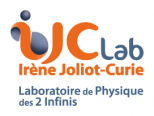Gravitational waves from binary systems
Compact objects like black holes and neutron stars are possible final states of stellar evolution. Compact binary systems are physical configurations where two compact objects are orbiting each other. We can have binary systems composed of two neutron stars, two black holes, or a black hole and a neutron star. When the orbit of a compact binary becomes comparable in size to the compact objects themselves, the binary becomes a very efficient source of gravitational waves. The gravitational-wave emission then starts radiating away the orbital energy, which causes the orbit to slowly shrink and become faster and faster. This is called the inspiral of the compact binary. Eventually, the compact objects fuse into a single remnant object, and the gravitational-wave emission cuts off. This is called the merger or coalescence of the binary. Depending on the nature and masses of the progenitor compact objects, the remnant object can be either a black hole, a short-lived neutron star that eventually collapses to a black hole, or a long-lived neutron star that remains in a stationary state.
Simulation of how a binary black hole merger would look like (credit: SXS project)
The evolution of the binary under gravitational-wave emission, and the resulting gravitational-wave signal, can be predicted fairly accurately using General Relativity, either via analytic approximations, numerical simulations, or combinations of both. The properties of the gravitational-wave signal depend strongly on the properties of the binary system: the spatial position and orientation of the system with respect to us, the masses and orbital angular momenta (spins) of the compact objects, the orbital eccentricity, and the nature of the compact objects. The availability of predictive models of the signal allows us to do very sensitive searches for coalescing compact binaries in data from gravitational-wave detectors like Virgo, LIGO and KAGRA. Once a signal is identified in the data, we can then also use the models to infer the properties of the source. By collecting many such detections and inferences, we can learn how many black holes and neutron stars are in the Universe, what is the distribution of their masses and spins, what is the structure of neutron stars, whether General Relativity correctly describes black holes and neutron stars, and the properties of any electromagnetic or neutrino emission that could possibly be associated with compact binary mergers.

Visualization of data from the LIGO and Virgo detectors at the time of a binary black hole merger (dark spot in the middle-right)
IJCLab’s gravitational-wave group is involved in the search for compact binary mergers in data from Virgo, LIGO and KAGRA. In particular, we contribute to the development and operation of a software called PyCBC, which is routinely used to search for compact binary mergers both by the LIGO-Virgo-KAGRA collaboration and by independent researchers. We are also involved in the preparation of the data analysis methods that will be used to study compact binary mergers with future gravitational-wave detectors, specifically LISA and the Einstein Telescope.
Related material
- GWTC-2, GWTC-2.1 and GWTC-3
- Realtime search for compact binary mergers in Advanced LIGO and Virgo’s third observing run using PyCBC Live
- Exploring the Bayesian parameter estimation of binary black holes with LISA
- Pre-merger Localization of Compact-binary Mergers with Third-generation Observatories
- PyCBC









